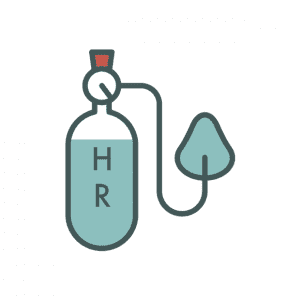At Meraki HR we work with lots of clients on what I call proactive HR. That’s helping them to design and implement a people strategy that helps them create great places to work which in turn means their people deliver great business results. But life isn’t always rosy, and we are dealing with people and things can and do go wrong – that’s life!
I would say that in my experience, the most common problem that I am asked to help my clients with is underperforming employees. I’ve not only helped managers with this issue within their teams and have coached them to deal with these matters successfully, I’ve also managed my own teams and had to deal with under-performing employees too! I know that it’s something none of us look forward to doing, but if it’s done in the right way, it really doesn’t have to be time consuming or complicated. Just follow my five steps below to see if you can turn this employee around, and if not, how you can deal with it fairly and effectively.
Here are my five top tips things for managing poor performance …
- How do you know that someone isn’t performing? It’s important that you don’t just “think” or “feel” that someone isn’t performing, as it needs to be based on fact. Facts can be based on not delivering or meeting targets or objectives or facts can be based on colleague or customer feedback with examples of the poor performance/behaviour.
- Once you start to either see this poor performance or hear about it from others as noted above, it’s important that you address the issues immediately. Don’t ignore it and hope that it will go away, because unless the person knows that what they are doing or how they are behaving is unacceptable, they don’t have the opportunity to do something about it. These are always difficult conversations to have, so make sure you go into the conversation prepared. This may mean that you have to tell the person who the feedback has come from, but you must give examples of the poor performance. So, if it’s that they have been rude to a customer, then you need to give the customer’s name and the feedback received from that customer. If it’s that they have not met a target or an objective or a deadline then be specific about exactly what it is they have failed to achieve and tell them the impact that this has had on the customer/the employee/the business.
- Once you have given them the details about the poor performance, you need to ask them why they think this has happened and be prepared to listen. There could be a very plausible reason why the incident or behaviour has happened, or they could tell you that they didn’t know of the target or the deadline. Finally, it could be that they have some problems at home at the moment and they are finding it difficult to concentrate on work. Just listen and take notes, using this time to think about how they or you can address or resolve the problem. If there are issues which you need to address, then address them, as this will then mean they can perform to the required standards as the excuse has been removed. If the reasons for them not performing are of a more personal nature, ask them what you can do to help and support them through this difficult time. It might be that they need to change their hours for a short period of time or that they need to go to a counselling appointment once a week and have a little time off. What’s important here is that you agree a plan of action that the business can support and in return you expect to see the required improvements.
- Put it in writing – whatever you have discussed and agreed should be written up. This doesn’t have to be in a formal letter but an email at least that can be referred to by both parties in the future if necessary. It’s important that this letter/email reflects accurately what was discussed and agreed. I would suggest that someone such as an HR professional checks this letter/email before it is sent to the individual.
- It’s now your responsibility to keep an eye on things. Have they improved? If so then that’s great. If not, what are you going to do next? Sometimes these informal approaches to performance management can be very successful as they can “nip” minor problems in the bud. However, on occasion, a more formal process may be needed where targets and improvement objectives are set, often known as a PIP (Performance Improvement Plan) with agreed deadlines which need to be monitored on a regular basis and documented as part of a formal performance management process. I would suggest that if you get to this stage, you may need the support of an HR professional.
It’s a myth that you can’t dismiss people for poor performance, you can, but only if you have followed the right process and have communicated this process to the person and given them the time and support needed to improve. Careful and good record keeping is key to the successful dismissal of an employee for poor performance.
I should point out that it’s never plain sailing when dealing with poor performance issues. The reason for this is that you are dealing with a human being, and you are essentially saying that someone is not performing well in their role and this can provoke several different reactions from people. Some can become very defensive and angry; some can get very emotional and some can just decide they can’t face the process at all and get themselves signed off work by a DR as “unfit for work due to stress.” These types of reaction are common because no one likes to hear they are not doing well and fundamentally people want to go to work to do a good job. Therefore, it’s important to have professional help and support throughout this process. An experienced HR professional will have seen and dealt with all of these reactions and will know exactly how best to deal with them to minimise the risks of the process not being followed to a successful conclusion for both parties; either the person improves, or the person is dismissed.
Book yourself in for a virtual cuppa and I can chat through my top tips on managing employee performance. Click on the link here.





















